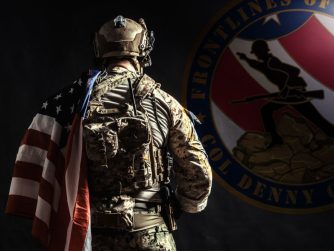On 30 Jan 1968, during the agreed upon cease-fire during the Tet Holiday, in coordinated attacks all across South Vietnam, communist forces launched their largest offensive of the Vietnam War against South Vietnamese and US troops.
About 80,000 troops of the North Vietnamese Army and National Liberation Front attacked cities and military establishments throughout South Vietnam. The most spectacular episode occurred when a group of NLF commandos blasted through the wall surrounding the American embassy in Saigon in an unsuccessful attempt to seize the embassy. Most of the attacks were turned back, with the communist forces suffering heavy losses.
Battles continued to rage throughout the country for weeks–the fight to reclaim the city of Hue from communist troops was particularly destructive. I was a rifle company commander in the 101st Airborne Division, and I was very near Hue when the attack began. During the following weeks I experienced the most intense fighting of my career. American and South Vietnamese forces lost over 3,000 men during the offensive; the enemy, as high as 40,000.
While the communists did not succeed militarily, the impact of the Tet Offensive on public opinion in the US was significant. The American people, who had been told a few months earlier that the war was successful and that US troops might soon be allowed withdraw, were stunned to see fighting taking place on the grounds of the US embassy.
Within weeks the Communists were defeated everywhere; indeed, General Giap, the North Vietnamese commander, mentioned in his memoirs that he was ready to give up and go back to the north—but he was encouraged to stay in the war by — who else? The anti-American main-stream media in the US. American media called the Tet Offensive a great Communist victory; there were demonstrations and riots in the US—and Giap decided to stay in the war. A good decision for Giap as he ultimately won the war, thanks to our media.



